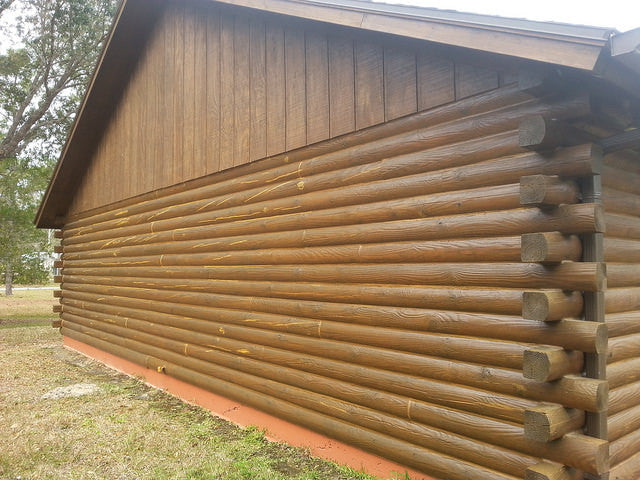4 Common Mistakes of DIY Chinking

Chinking is a filler material that's typically applied between the joints in log home constructions. Modern chinking products are far more advanced than their traditional mortar counterparts, but most retain the same overall appearance for a rustic finish. If you're adding chinking to your home, it's important to research the process carefully, so you don't make these common mistakes.
Over-Anxious Application
You've just finished your log home construction, and you're itching to give it that final touch of chinking. Unfortunately, chinking isn't something you can do right away. If you're working with a construction made of raw wood, you should wait at least two years after construction to begin the chinking process. Logs are rarely cured properly before the building process, so this will give them time to settle, revealing the cracks and spaces that typically show over time.
Be very careful about applying chinking to logs that are stained. Certain water-based stains are compatible with chinking. However, you should read the manufacturer's specifications carefully and allow at least 21 days for the stain to cure.
Messy Execution
Attention to detail is very important when you're chinking your home. DIYers often neglect to give the project the full time and attention that it deserves. Messy chinking may not adhere to the wood properly or set in an effective manner.
It's important to remember that chinking is both aesthetic and functional. You should take time to carefully prepare the workspace, apply the chinking so it adheres to at least two surfaces, and give the material a neat and clean finish.
Improper Materials
If you're applying chinking for the first time, you may not know exactly what you need for this process. You should insert a foam backer rod before applying the chinking for any joint larger than ¼-inch. If you're working with a smaller rod, use a dab of sealant or a small amount of spray adhesive to hold it in place while you work.
The backer rod provides a flexible surface that the chinking won't adhere to long-term. The chinking frees itself from the rod over time, which leaves it free to expand and contract with the surrounding logs. Failure to use a backer rod can lead to chinking with poor insulation and a short lifespan.
Incorrect Environment
Consider the environment and weather carefully before you begin chinking. You should apply the chinking when it's between 40 and 90 degrees. Working in an environment that's too hot or too cold will have a negative effect on the quality of your work and the stability of the chinking.
Check the wood moisture before you begin your project. The moisture should be below 23 percent for the chinking to adhere properly. If the moisture is too high, give the wood time to dry out before you begin.
Chinking will give your home a warm and rustic finish while enhancing your insulation and energy efficiency. If you're looking for a great way to upgrade your log home, a proper application of chinking can make a dramatic difference.
Image via Flickr by JAHLUKA
